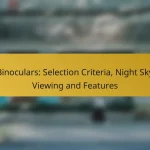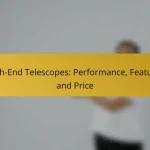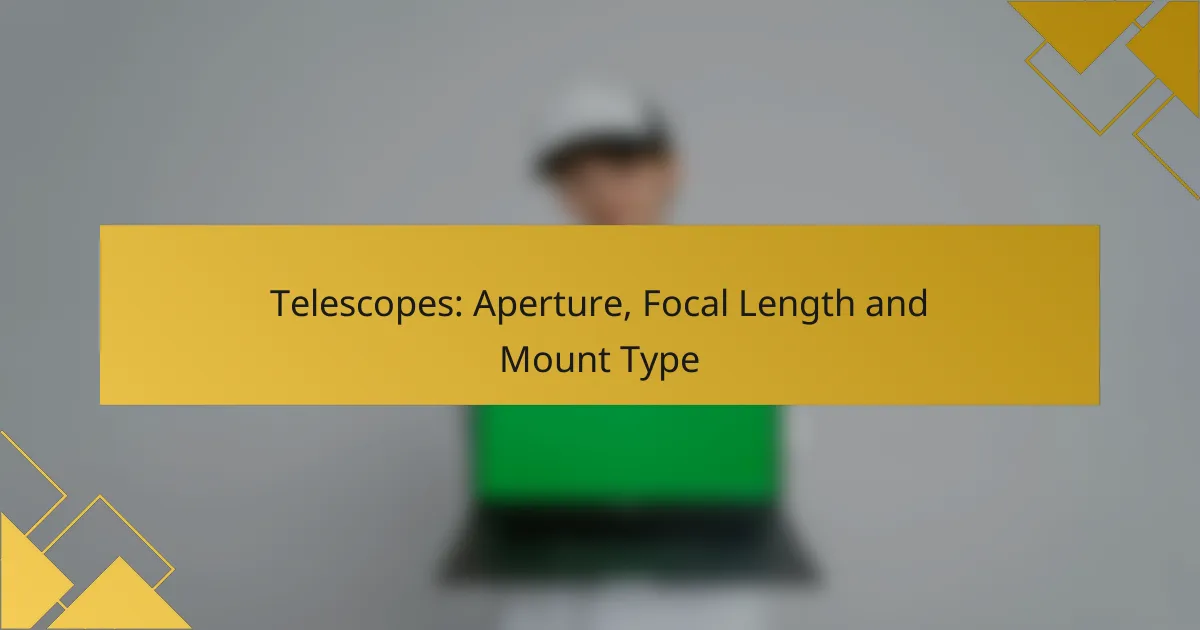Advanced telescope features revolutionize the way enthusiasts engage with astronomy by simplifying operation and enhancing the observing experience. With improved optics and essential accessories, users can enjoy clearer images and greater detail, allowing them to focus on the wonders of the universe rather than technical complexities.

What advanced telescope features enhance usability?
Advanced telescope features significantly improve usability by making the equipment easier to operate and enhancing the overall observing experience. These features streamline setup, tracking, and data integration, allowing users to focus on astronomy rather than technical challenges.
Smartphone integration
Smartphone integration allows users to control telescopes via dedicated apps, providing a user-friendly interface for navigation and settings adjustments. This feature often includes access to star maps, celestial event notifications, and image sharing capabilities.
Many telescopes now support Bluetooth or Wi-Fi connections, enabling real-time data exchange. Users can easily update firmware or access online resources directly from their mobile devices, enhancing the overall usability of the telescope.
Automated tracking systems
Automated tracking systems enable telescopes to follow celestial objects as they move across the sky. This feature is particularly beneficial for astrophotography, where precise tracking is crucial for capturing clear images over extended exposure times.
These systems often utilize GPS and advanced algorithms to ensure accurate positioning. Users should consider the type of tracking system, such as alt-azimuth or equatorial, based on their specific observing needs and preferences.
Intuitive user interfaces
An intuitive user interface simplifies the operation of advanced telescopes, making it easier for beginners and experienced users alike to navigate settings and features. Touchscreen displays and well-organized menus enhance accessibility and reduce the learning curve.
When selecting a telescope, look for models with clear labeling and straightforward instructions. A good interface can significantly enhance the observing experience by minimizing frustration and maximizing enjoyment.
Lightweight materials
Lightweight materials, such as carbon fiber and aluminum, contribute to the portability and ease of handling of telescopes. These materials reduce the overall weight without compromising structural integrity, making it easier to transport equipment to various observing locations.
When considering a telescope, check the weight specifications to ensure it meets your portability needs. A lighter telescope can be particularly advantageous for those who travel frequently or have limited storage space.
Portable designs
Portable designs focus on compactness and ease of transport, allowing users to set up their telescopes quickly in various locations. Many modern telescopes feature collapsible or modular designs that facilitate easy storage and transport.
When choosing a portable telescope, consider factors such as size when collapsed, ease of assembly, and included carrying cases. A well-designed portable telescope can enhance your ability to observe celestial events without the hassle of cumbersome equipment.
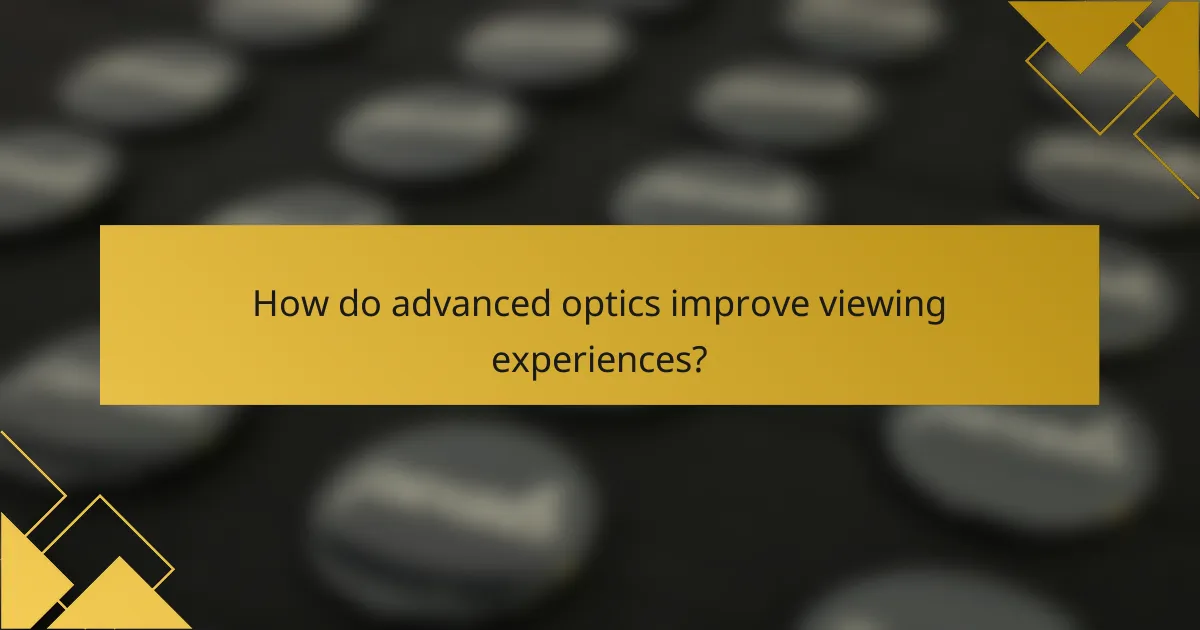
How do advanced optics improve viewing experiences?
Advanced optics enhance viewing experiences by providing clearer, sharper images with greater detail. These technologies work together to minimize distortions and maximize light transmission, allowing users to observe celestial objects with unprecedented clarity.
High-resolution lenses
High-resolution lenses are designed to capture more detail by reducing optical aberrations. These lenses often feature specialized glass and precise manufacturing techniques, resulting in images that are crisp and clear even at high magnifications.
When selecting a telescope, look for models with high-quality glass and multi-element lens designs. This ensures that you can view distant objects with clarity, making it easier to observe planets, stars, and other celestial phenomena.
Multi-coated optics
Multi-coated optics involve applying multiple layers of anti-reflective coatings to lens surfaces, which significantly increases light transmission. This technology reduces glare and enhances contrast, allowing for brighter images in low-light conditions.
When choosing a telescope, prioritize those with fully multi-coated optics. This feature is especially beneficial for astrophotography, where capturing fine details and colors is crucial for stunning images of the night sky.
Adaptive optics technology
Adaptive optics technology compensates for atmospheric distortions in real-time, providing clearer images of celestial objects. This system uses sensors and actuators to adjust the optics dynamically, correcting for turbulence caused by the Earth’s atmosphere.
While primarily found in professional telescopes, some advanced amateur models now incorporate adaptive optics. If you’re serious about astronomy, consider investing in a telescope with this feature to enhance your viewing experience, particularly in urban areas with light pollution.
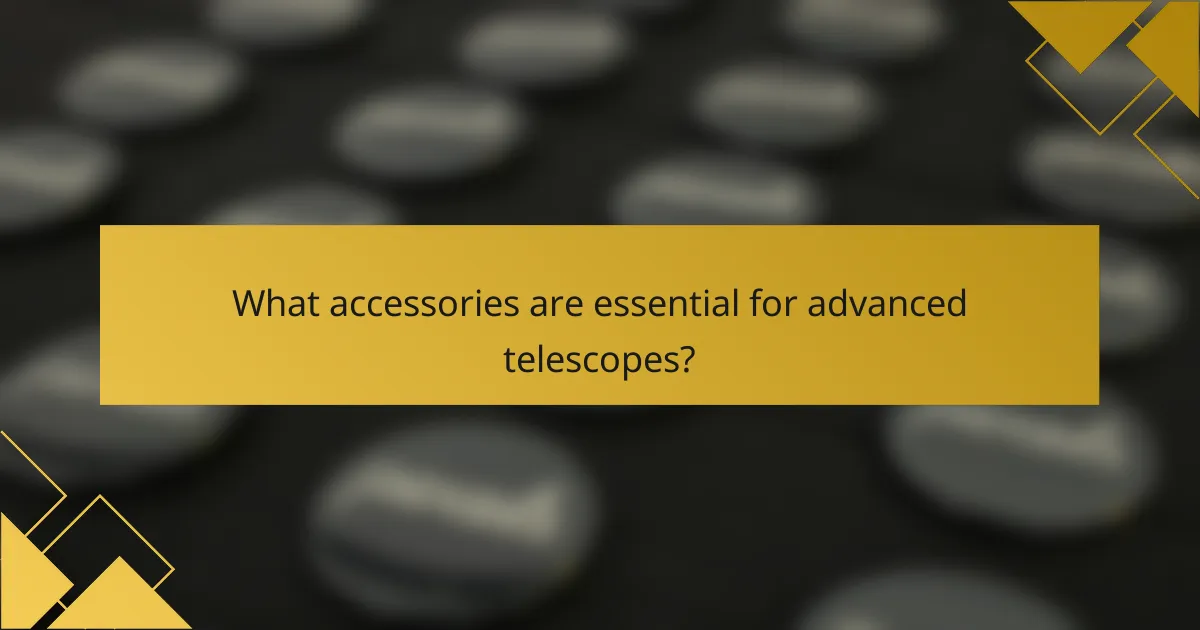
What accessories are essential for advanced telescopes?
Essential accessories for advanced telescopes enhance usability and improve the overall observing experience. Key items include specialized eyepieces, camera adapters, filter sets, and mounting systems, each serving a unique purpose in optimizing performance.
Specialized eyepieces
Specialized eyepieces are crucial for maximizing the viewing experience through an advanced telescope. They come in various focal lengths and designs, allowing for different magnifications and fields of view. Consider eyepieces with wider apparent fields for immersive viewing or those with higher focal ratios for planetary observation.
When selecting eyepieces, look for options that offer comfortable eye relief and minimal distortion. Popular choices include Plössl, Nagler, and Orthoscopic designs, each catering to specific astronomical needs.
Camera adapters
Camera adapters enable astrophotography by connecting cameras to telescopes, allowing users to capture images of celestial objects. These adapters come in various forms, such as T-rings and focal reducers, depending on the camera type and desired image scale.
When choosing a camera adapter, ensure compatibility with both your telescope and camera model. A good quality adapter will minimize vignetting and maintain image clarity, essential for high-quality astrophotography.
Filter sets
Filter sets enhance visibility and contrast when observing specific celestial objects. They can reduce light pollution, enhance color, and improve detail in planetary and deep-sky observations. Common filter types include light pollution filters, narrowband filters, and color filters.
Consider a filter set that includes a variety of options to suit different observing conditions. For example, a light pollution filter is beneficial for urban stargazing, while a narrowband filter is ideal for viewing emission nebulae.
Mounting systems
Mounting systems are vital for stability and precision in telescope operation. They come in two main types: alt-azimuth and equatorial mounts. Alt-azimuth mounts are easier to use for beginners, while equatorial mounts allow for tracking celestial objects as they move across the sky.
When selecting a mounting system, consider the weight and size of your telescope, as well as your observing style. A sturdy mount will ensure smoother tracking and reduce vibrations, enhancing your overall viewing experience.
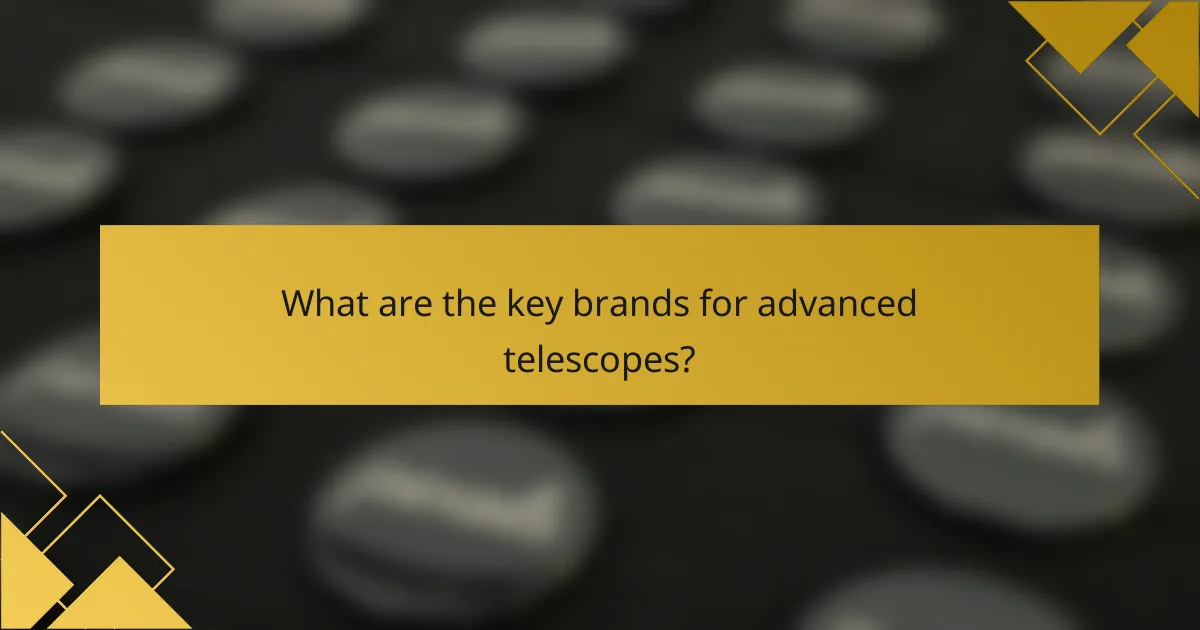
What are the key brands for advanced telescopes?
Several brands dominate the advanced telescope market, each offering unique features and technologies. Celestron, Meade Instruments, and Sky-Watcher are among the most recognized names, known for their quality, usability, and range of accessories.
Celestron
Celestron is a leading brand in the telescope industry, renowned for its innovative designs and user-friendly technology. Their telescopes often feature advanced optics and computerized mounts, making them suitable for both amateur and professional astronomers.
Popular models include the Celestron NexStar series, which offers a range of sizes and capabilities. Users appreciate the ease of setup and the ability to track celestial objects automatically, enhancing the overall observing experience.
Meade Instruments
Meade Instruments is another prominent player, known for its high-quality telescopes that cater to various skill levels. Their telescopes often include features like advanced tracking systems and high-resolution optics, appealing to serious stargazers.
The Meade LX series is particularly popular, offering features such as GPS alignment and extensive accessory compatibility. This allows users to customize their setups for specific astronomical observations, making it a versatile choice.
Sky-Watcher
Sky-Watcher is recognized for providing excellent value in the advanced telescope market, combining quality with affordability. Their telescopes are designed with both novice and experienced users in mind, featuring intuitive designs and robust performance.
The Sky-Watcher EQ series is well-regarded for its stability and ease of use, making it suitable for astrophotography and visual observation. Users often highlight the brand’s commitment to quality optics and durable construction, ensuring longevity and satisfaction.

How to choose the right advanced telescope?
Choosing the right advanced telescope involves understanding your specific viewing needs, budget limitations, and portability requirements. By evaluating these factors, you can select a telescope that enhances your stargazing experience and meets your expectations.
Consider your viewing goals
Your viewing goals dictate the type of telescope you should consider. If you’re interested in planetary observation, a telescope with a longer focal length may be beneficial, while deep-sky enthusiasts might prefer a wider aperture for capturing faint objects.
Think about whether you want to observe planets, galaxies, or nebulae, as this will influence the features you prioritize. For instance, a telescope with tracking capabilities can greatly enhance your experience when observing fast-moving celestial objects.
Evaluate budget constraints
Your budget is a crucial factor in selecting an advanced telescope. Prices can range from a few hundred to several thousand dollars, depending on the features and quality. Establish a clear budget before you start shopping to narrow down your options effectively.
Consider not only the initial cost of the telescope but also potential additional expenses for accessories such as eyepieces, filters, and mounts. A good rule of thumb is to allocate about 20-30% of your total budget for these accessories to enhance your viewing experience.
Assess portability needs
Portability is essential if you plan to observe in various locations. If you intend to travel or hike to dark-sky sites, a lightweight and compact telescope is advisable. Consider models that can be easily disassembled and packed for transport.
Conversely, if you plan to set up in a fixed location, a larger, more robust telescope may be suitable. Always weigh the trade-offs between size and ease of transport to ensure your telescope aligns with your observing habits.
